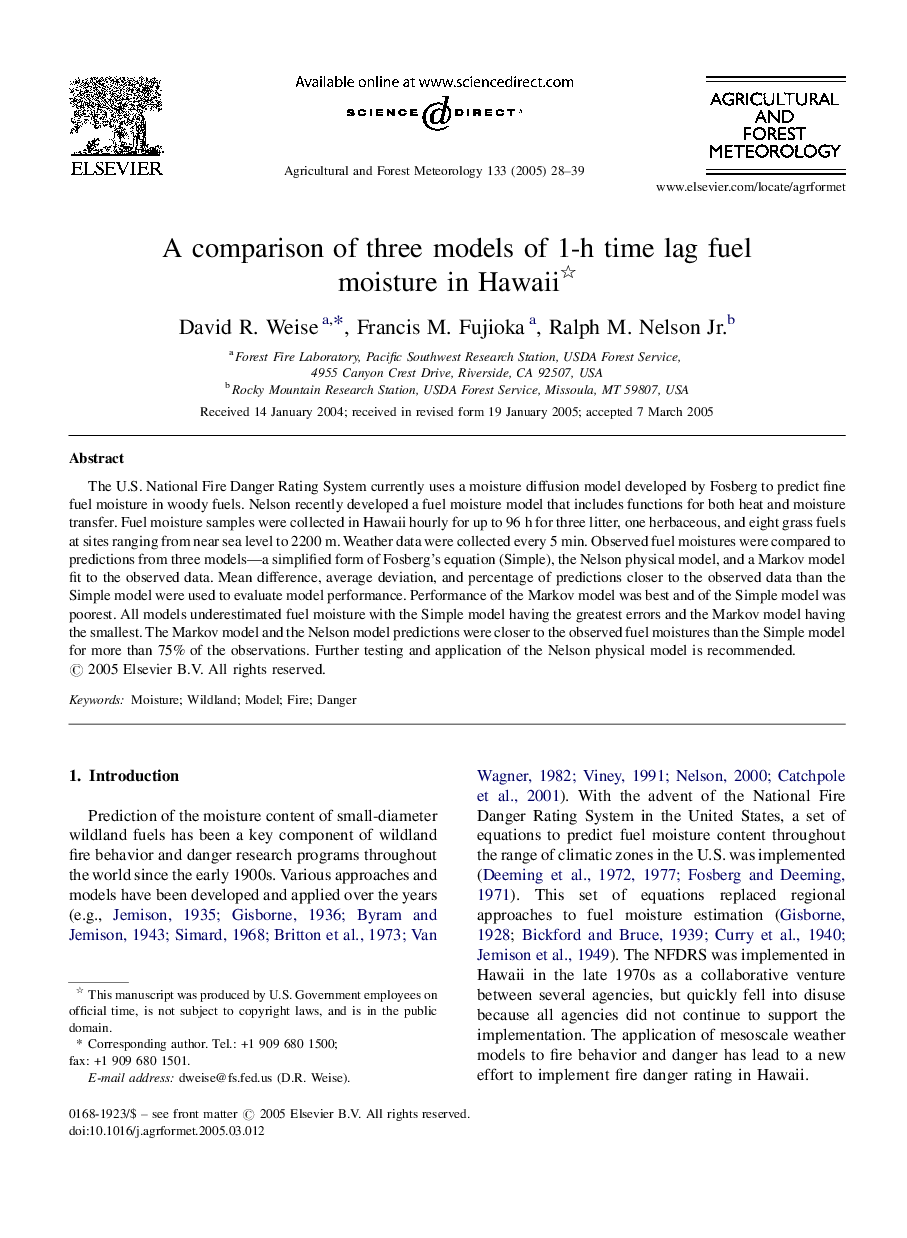| Article ID | Journal | Published Year | Pages | File Type |
|---|---|---|---|---|
| 9619424 | Agricultural and Forest Meteorology | 2005 | 12 Pages |
Abstract
The U.S. National Fire Danger Rating System currently uses a moisture diffusion model developed by Fosberg to predict fine fuel moisture in woody fuels. Nelson recently developed a fuel moisture model that includes functions for both heat and moisture transfer. Fuel moisture samples were collected in Hawaii hourly for up to 96Â h for three litter, one herbaceous, and eight grass fuels at sites ranging from near sea level to 2200Â m. Weather data were collected every 5Â min. Observed fuel moistures were compared to predictions from three models-a simplified form of Fosberg's equation (Simple), the Nelson physical model, and a Markov model fit to the observed data. Mean difference, average deviation, and percentage of predictions closer to the observed data than the Simple model were used to evaluate model performance. Performance of the Markov model was best and of the Simple model was poorest. All models underestimated fuel moisture with the Simple model having the greatest errors and the Markov model having the smallest. The Markov model and the Nelson model predictions were closer to the observed fuel moistures than the Simple model for more than 75% of the observations. Further testing and application of the Nelson physical model is recommended.
Related Topics
Physical Sciences and Engineering
Earth and Planetary Sciences
Atmospheric Science
Authors
David R. Weise, Francis M. Fujioka, Ralph M. Jr.,
